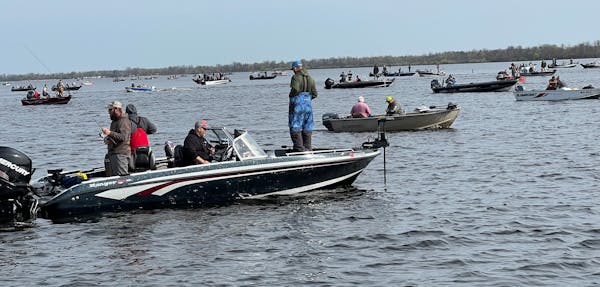An unpopular season is in full swing in Minnesota, now through early July, and with a returning champion. "It's here," said the Department of Health epidemiologist Elizabeth Schiffman.
Blacklegged ticks, aka deer ticks, transmit Lyme disease and are a high risk beginning this part of May. Both nymphs (the size of poppyseeds) and adults are out looking for hosts this time of year.
While the COVID-19 pandemic limited the monitoring by infectious disease experts of ticks, Schiffman said there is good evidence that blacklegged ticks, found in wooded and brushy areas, are expanding their reach north and west.
Indications of a new tick
What raises the news beyond the seasonal update is the presence of a new tick, normally seen in south-central and southeastern states. The lone star tick is turning up more frequently in Minnesota and is known to transmit diseases like ehrlichiosis, similar to that from other ticks, that produce flu-like symptoms. Domestic pets also are at risk.
The tick is brownish-red. The female has a distinctive yellow-white mark on the middle of its back. It also is rounder than a blacklegged tick and is close in appearance to a wood tick.
They are showing up for multiple reasons: They are transported by people or animals, and, Schiffman said, climate change almost certainly has expanded the species' range into Minnesota.
"There are periodic introductions, and we don't have enough of those introductions and quite the right niche of a climate situation in some of those spots to allow it to take off and become an endemic problem — yet."
The lone star tick has been associated with people developing a meat allergy, but Schiffman said it's important for people to keep perspective.
"In terms of risk here in Minnesota, your risk for that is so, so low compared to getting a regular old blacklegged tick and ending up with Lyme disease," she said.
She doesn't want its emergence to overshadow the risk of blacklegged ticks. "We don't want people to lose sight of the real risk of some of our endemic tickborne diseases."
Back to monitoring
Staff will go out this year to sampling sites including Itasca State Park, Fort Ripley in central Minnesota, and Houston County in the southeast. Unexpected trips come up, too, based on what is reported from the medical community.
"We try to make sure we are more on the leading edge of things and keep an eye on the changes," Schiffman said, "so I think every year it involves us reassessing and making sure what we do is giving us good, informative info for understanding the risks in Minnesota."
Schiffman said if people see something out of the ordinary, it is helpful to contact the Infectious Disease Epidemiology and Control Division of the Department of Health. Click here for the online comment form or go to bit.ly/tickcontact.
Prevention is doable
People need to think now about prevention, Schiffman said.
Here are some basics, which are available in more detail online through the state Health Department and Centers for Disease Control websites.
- Check daily for ticks if you are spending time outdoors. Blacklegged ticks are common in woody and brushy areas. Also, check clothing and gear. Ticks can survive a wash cycle but will die in 10 minutes of high heat in a dryer.
- Use standard DEET products outdoors. A product with a concentration up to 30% is considered safe for adults and children, according to the American Academy of Pediatrics.
- Permethrin is recommended for the outside of clothing and gear. After it dries, it can kill ticks on contact.
- Remove a tick from the skin as soon as possible if one is found. Pull it away slowly by its head, preferably with tweezers, and wash the area with soap.
And if you feel compelled to contact a doctor?
"Exposure context can help [a physician] more than a specific symptom," Schiffman said, when it comes to identifying what might have produced a bite and its effect.
Yuen: How success has pushed Minnesotans off sidelines in trans athlete debate
David Festa's return to Twins goes south in a hurry

NBA Finals: Haliburton caps huge rally with winning jumper as Pacers stun Thunder 111-110 in Game 1

Twins call up pitching prospect Travis Adams to bullpen



